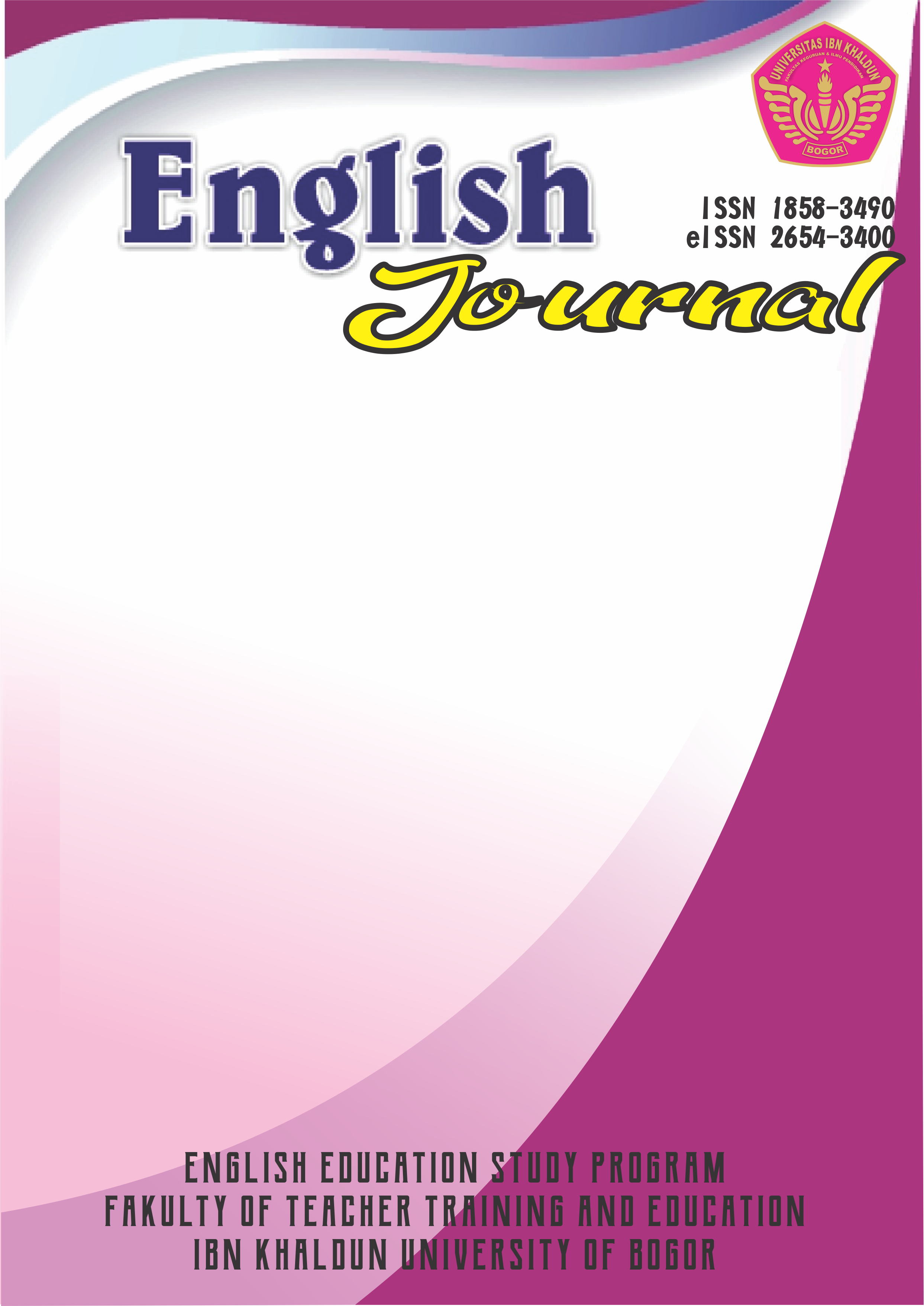STRENGTHENING STUDENT'S ENGLISH SKILLS THROUGH THE EXPOSURE OF AUDIO VISUAL-BASED ENGLISH STORIES
DOI:
https://doi.org/10.32832/english.v12i1.3819Abstract
Nowadays, our life affected by fast-changing technology, so do the learning process. Many studies stated that Technology helps the students and teachers to achieve learning goals. One of the common techniques that usually help students to improve their English skills is by listening to audio visual- based English stories. In this study, a student is exposed to audio visual- based English stories in learning English, the goal of this study is to examine which skills that greatly impacted by the exposure of audio-visual English stories into student's learning. This study uses the Qualitative method, in which written test results, observation results, and recordings are used to obtain the data. By the end of the study, it can be concluded that Listening skill is the most affected skill from the exposure of the Audio-Visual based English Stories.References
Abdolmanafi-Rokni, S. J. (2013). The Effect of Listening to Audio Stories on Pronunciation of EFL Learners.
Abdolmanafi-Rokni, S. J. (2013). The Effect of Listening to Audio Stories on Pronunciation of EFL Learners. 69-85.
Abdul-Arneer, M. A. (2014). Improving Vocabulary Leaming Through Digital Stories with Iraqi Young Learners of English at the Primary Level. Journal of Studies in Social Sciences, 197-214.
Andrade, M. d. (2014). Role of Technology iSupporting English Language Learners in Today's Classrooms.
Ashikuzzaman, M. (2013, november 16). Retrieved 4 23, 2019, from LIS BD Network: http://www.lisbdnet.com/definition-of-audio-visual-materials/
Asma, L. (2016). The Impact of Using the Audiovisual Aids to Improve Students' Speaking Skill:.
Bachelor's thesis, J. R. (2017). The use of the technological devices in english teaching.
;AK.IR, D. i. (2006). THE USE OF VIDEO AS AN AUDIO-VISUAL MATERIAL IN FOREIGN. The Turkish Online Journal ofEducational Technology, 5(4).
Creswell, J. W. (2012). Educational Research - Planning, Conducting, and Evaluating Quantitative and Qualitative Reseach: 4th Editiion. Boston: Pearson.
Doosuur Ashaver, S. M. (2013). The Use of Audio-Visual Materials in the Teaching and Leaming Processes in Colleges of Education in Benue State-Nigeria. IOSR Journal ofResearch & Method in Education (IOSR-JRME).
DeWalt, Kathleen M. & DeWalt, Billie R. (2002). Participant observation: a guide for fieldworkers. Walnut Creek, CA: AltaMira Press.
Eddy, E. (n.d.). On Interconeections among selected aspect of english grammar in slovak learner's acquisition.
Fatemeh Parvareshbar, B. G. (2016). The Effect of Using Short Stories on Vocabulary Leaming of Iranian EFL Learners. Theory and Practice in Language Studies, 1476-1483.
Fatih Mehmet Cigerci, M. G. (2017). Use of digital stories to develop listening comprehension.
Fraser MacLeod, P. L. (2011). Exposure to English outside the Classroom. Gerring, J. (2007). Case Study Research. New york: Cambridge University Press.
Hilal Inala, A. C. (2014). Story-based Vocabulary Teaching. Social and Behavioral Sciences, 675-679.
Imam Shodiqin, R. A. (2014). IMPROVING STUDENTS' PRONUNCIATION BY LISTENING TO THE AUDIO VISUAL AND ITS TRANSCRIPTION.
Kumiawan, F. (n.d.). The use of Audio Visual Media in Teaching Speaking.
Nomass, B. B. (2013). The Impact of Using Technology in Teaching English as a Second. English Language and Literature Studies.
Ryan Baker, D. m. (2015). The Use of technology to Enhance English Language (ESL) teaching.
Solanki D. Shyamlee, M. P. (2012). Use of Technology in English Language Teaching and Leaming. International Conference on Language, Medias and Culture, 33.
Stef~nsson, E. G. (2013). Second Language Acquisition. The Effect of Age and Motivation.

















1.png)




